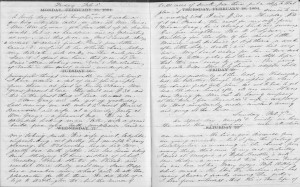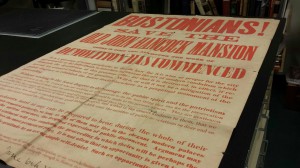
Mark Twain is credited with the line “Humor is tragedy plus time,” and it is certain that with time comes perspective (and perhaps comedy). Of course, context is something that can be lost with time’s passage, as three entries in Regina Shober Gray’s diary suggest. In each case, her subjects are Philadelphia ladies, now (between 1874 and 1881) well-established: Mrs. Gray’s memory stretches back, though, to an earlier day, where their social status was more equivocal.
Boston, Saturday, 21 February 1874: [Rear Admiral Charles Steedman’s[1] daughter] Lou Steedman’s engagement to Dr. Lawrence Mason[2] is announced. I hope there goes more love to this affair then seems to have been vouchsafed to Rollins Morse, poor man, when Lou’s sister May consented to marry him.[3] Continue reading This “piecemeal world”



